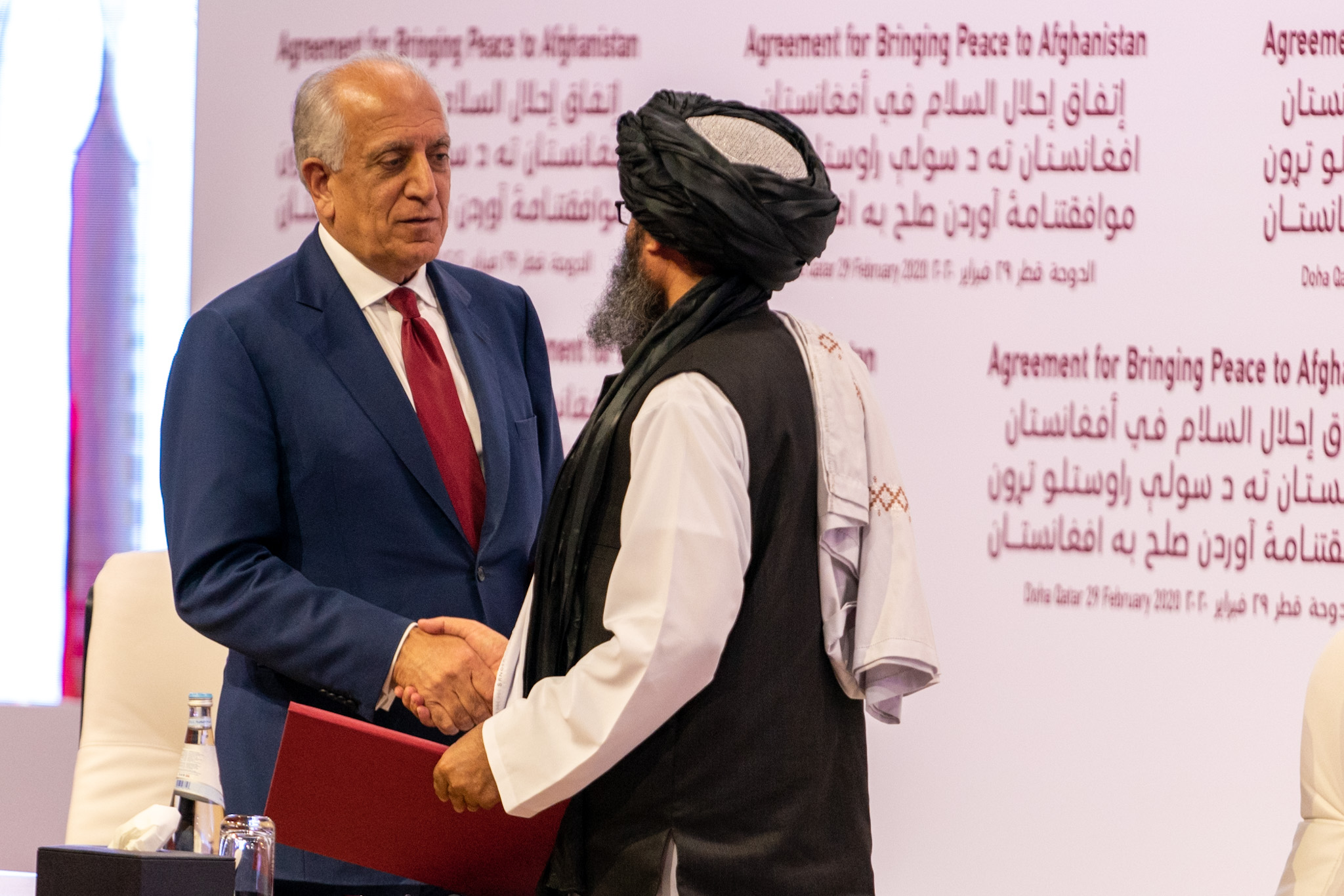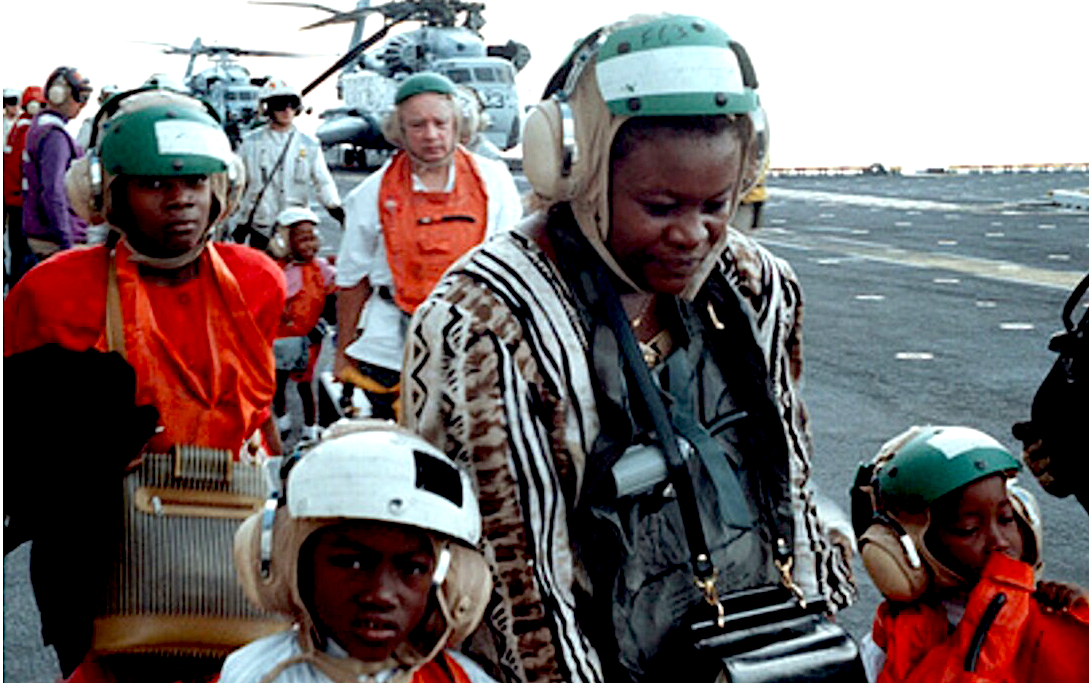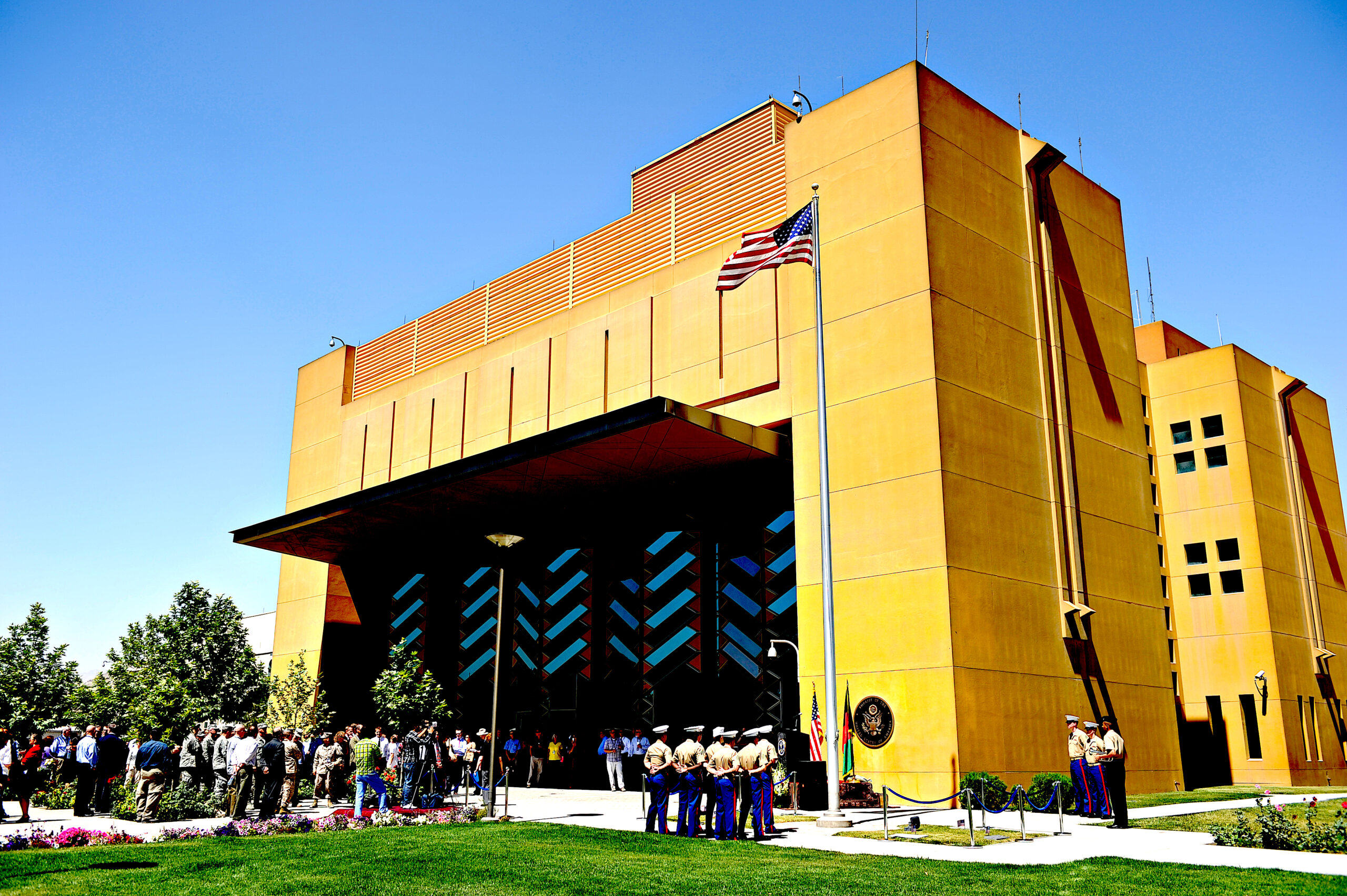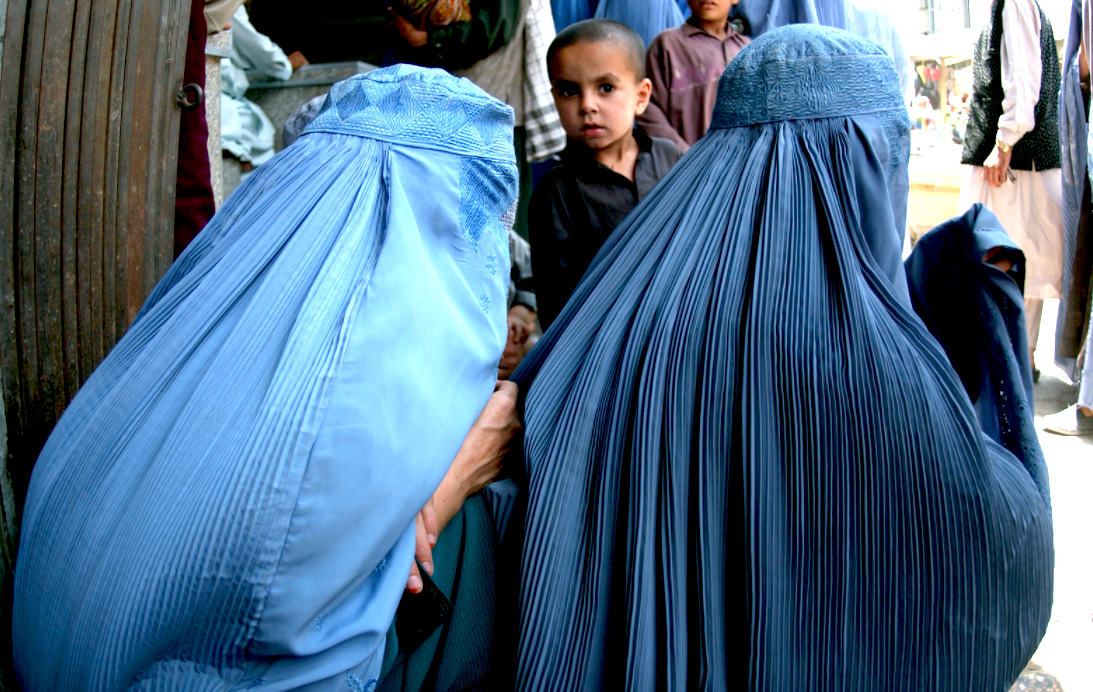Ann Wright says memories in Afghanistan are long and retaliation is a given.

Kabul at night, 2016. (CC BY-SA 4.0, Wikimedia Commons)

While the people of Afghanistan are in a state of fear of the Taliban who now control the capital, major cities and countryside after the U.S. and NATO occupation of 20 years, please pardon my personal observances of some of my experiences during 16 years in the U.S. diplomatic corps and opening and closing U.S. embassies in Sierra Leone and Afghanistan and the effects on the civilian populations of the countries involved.
In December 2001, I was a part of a very small team from the U.S. Department of State who were sent to Kabul to reopen the U.S. embassy. It had been closed for 12 years following the Soviet exodus from Afghanistan and the subsequent civil war between the warlord militias who fought to gain land and influence. The U.S. had sent CIA paramilitary and some U.S. Army Special Forces into Afghanistan in October 2001 to chase down Osama bin Laden and Al Qaeda after the events of 9/11.
Now, 20 years later, the deaths of hundreds of thousands of Afghans and a few thousands of international military including the U.S., the U.S. and its NATO partners are exiting Afghanistan under a pitiful agreement brokered during the Trump administration by Zalmay Khalizad, former U.S. ambassador to Afghanistan and now special representative for Afghanistan reconciliation, himself an Afghan who came to the U.S. as a teenager.
The deal with the Taliban sold out the government of Afghanistan and ended up with the release of 6,000 Taliban prisoners for an agreement that the Taliban would not fire on U.S. military during its departure from Afghanistan. No deal was struck for power-sharing or any other aspect that could have put the government of Afghanistan on a strong negotiating footing.
After undercutting the Afghan government, the U.S. is now left without any leverage over the Taliban and is facing the rapid takeover of the country as many of the 300,000 Afghan personnel trained by the U.S. and NATO militaries surrender to the Taliban or return to the warlord militias from which they came.

Zalmay Khalilzad, left, the U.S. envoy, signs off on peace deal with Mullah Abdul Ghani Baradar, a Taliban leader, in Doha, Qatar, Feb. 29, 2020. (State Department)
I was told when I arrived in Afghanistan that there is a time-honored tradition of changing sides depending on who has more personnel and firepower, and to live to fight another day. We are definitely seeing that now. Today we see that the president of the country, Ashraf Ghani, has fled to a neighboring country. [The Taliban have taken over the country and declared victory.] I met Ghani when he arrived in Afghanistan as a private citizen in January 2002, just coming from lengthy employment with the World Bank. He was minister of finance for a period during the administrations of Hamid Karzai.
Five thousand U.S. military are arriving in Kabul to protect the international airport as over 4,000 U.S. government and contract employees leave. U.S. State Department Spokesperson Ned Price on Aug. 12 said that it is “not an abandonment, not an evacuation, not a wholesale withdrawal, but is a reduction in the size of our civilian footprint.” A skeleton staff may remain in Kabul to keep the U.S. embassy nominally “open.” Despite what the State Department calls it, the Afghan ambassador to the U.S. on Aug. 13 called U.S. actions “an abandonment.”
U.S. embassy personnel have destroyed sensitive documents as they prepare to leave Afghanistan. U.S. envoy Zalmay Khalilzad is attempting to extract a commitment from the Taliban that they will not attempt to take over the extensive U.S. embassy compound “if it ever wants to receive foreign aid.”
Evacuation of Sierra Leone in 1997

May 30, 1997: Evacuees from Freetown, Sierra Leone, are escorted across the flight deck of the USS Kearsarge. (DoD)
With the embassy staff in Kabul is in withdrawal/evacuation mode, it reminds me of what our embassy staff went through 25 years ago in 1997 when a coup of militants and an element of the Sierra Leonean Army overthrew the elected government of the West African country. Violence on the streets of Freetown, the capital, including the temporary kidnapping of a U.S. Marine and an embassy local employee driver, caused the evacuation of the entire international community, embassies, UN offices and international NGOS, and most of the Sierra Leonean government who felt they were in mortal danger.
While there was no U.S. military involvement in Sierra Leone’s civil war, the U.S. embassy had been the backstop of gunfire as the nearby State House was taken by the rebels. Ninety windows were blown out of the embassy and the rebels made attempts to come into several embassy properties but were talked out of entering by our brave local employees.
The UN envoy, the British high commissioner and I, as charge d’affairs of the U.S. embassy, had discussions with the leadership of the coup about their giving up the coup in exchange for the government meeting several demands. But we were told by our higher-ups to stop discussions and prepare for evacuation as they had received indications that we might be kidnapped if we continued the talks.
That began the rapid organization to prepare for closing the embassy in just a few days. The U.S. military sent the huge amphibious assault ship USS Kearsarge for the main evacuation.

May 24, 2017: The USS Kearsarge in New York Harbor. (U.S. Marine Corps, Gabby Petticrew)
The Kearsarge had been offshore Zaire for possible evacuation of Americans from that country so we had to wait for the main evacuation for the Kearsarge to arrive. We put some embassy family members on a chartered flight arranged by the British embassy. But over the next three days we evacuated over 2,500 persons, including many U.S. embassy local employees, by helicopter from a U.S.-military-secured hotel to the Kearsarge, by then several miles offshore.
Thousands of Sierra Leonean citizens gathered at the hotel hoping they could be evacuated, but the decision in Washington was that the U.S. could not evacuate all of them. They were on their own to get to neighboring countries if they wanted to flee from the violent coup makers.
The embassy remained closed for one year until a Nigerian military force pushed the coup makers off the peninsula on which the capital was located. The U.S. embassy was closed six months later when rebel groups again came into the city. Peace in Sierra Leone was finally achieved with the introduction of 18,000 United Nations sponsored military units that stayed in the country for several years.
Back to Afghanistan

May 30, 2011: Memorial Day at the U.S. embassy in Kabul. (S.K. Vemmer, State Department, Wikimediia Commons)
Back to Afghanistan. I was in Kabul in December 2001 on the small team that reopened the U.S. embassy. I stayed for about six months. We never dreamed the U.S. would stay in Afghanistan for 20 years. In fact, our initial cables back to Washington predicted we should do what the U.S. intended to do in a short time as foreign militaries in Afghanistan, no matter the rationale for their presence, eventually were pushed out by Afghans.
Possible Retaliation
U.S. officials are very well aware that local citizens who work with the U.S. military are endangering themselves and their families when the U.S. departs. The U.S. wars in Viet Nam, Iraq, Somalia have seen retaliation against persons who have worked with U.S. forces, but the protection of those persons is never considered in the decision making of sending U.S. military into a situation much less during the fast withdrawal of forces. After 20 years in Afghanistan, it is estimated that 50,000 persons are eligible for some type of U.S. visa.
Retaliation by the Taliban against Afghan national military and national police forces trained by the U.S. and NATO were expected and have occurred. Afghan military units are surrendering to the Taliban in hopes they will not be killed in the time-honored tradition of recognizing that the opposing forces have more personnel and weaponry and surrendering to save your life.
Government forces on the borders of Afghanistan have surrendered in droves. From May 1-27, at least 26 outposts and bases in four provinces — Laghman, Baghlan, Wardak and Ghazni — surrendered after the Taliban used village elders to deliver to outposts messages to surrender or be killed.
However, surrendering does not work for all units. In July, 22 Afghan Special Forces commandos, including the son of an Afghan general, were executed by Taliban as they were surrendering.
The executions by the Taliban remind me of 2001 when General Abdul Rashid and U.S. forces took Taliban prisoners from Sheberghan prison and executed them in the desert as documented in the 2002 film: Afghan Massacre: Convoy of Death. Memories in Afghanistan are long and retaliation is a given.
I don’t think the Taliban will take over the U.S. embassy compound as the Taliban wants international aid. And I suspect the U.S. will have a substantial military force inside the embassy to protect it. There were already 90 marines inside and I think many of the 5,000 will go into the compound to protect the facility as seeing the facility overrun would not be what any administration wants to have seen.
Warlords & Their Militias: Same Story 20 Years Later

Atta Mohammad, on right, in March 2010 meeting with German Interior Minister Thomas de Maizière. (DoD, Daniel Stevenson)
While in Kabul in 2001/2002 I also met regional warlords who had wreaked havoc on the capital city after they had pushed out the Soviets. With U.S. envoy Khalizad, I met with General Dostum and warlord Atta Mohammad in Mazar-i-Sharf in January 2002 to try to get them to stop fighting among themselves (and ending up getting food poisoning from having lunch at Dostum’s house).
Dostum was the warlord whose militias killed over 3,000 Taliban and other prisoners from Sheberghan prison by shooting into containers that contained the prisoners and then burying their bodies in the desert. Afghan Massacre: Convoy of Death documents these murders, which will be a basis for retaliation by the Taliban against Dostum and his militia 20 years later.
Similar Taliban retaliation should be expected by the Taliban against warlord Ismail Khan who has ruled the Herat region on the border with Iran for over 20 years. Khan was captured in Herat several days ago.
Presidential Palace in Kabul

President Palace in Kabul where the U.S.-Afghanistan joint declaration announcement ceremony was held on Feb. 29, 2020. (DoD, Nicole Mejia)
Today we know the Taliban have entered the presidential palace from which Ghani recently fled. The TV images of the Taliban in the palace remind me of when I first went to the palace in 2001 when Hamid Karzai invited us to stay for lunch-a pilaf. (It was the first hot meal we had had in Afghanistan. Before we got our little stove working in the bunker, and we were doing take-out from a restaurant owned by the brother of one of our embassy employees.)
The paintings in palace were being retouched after a protective overlay of paint on images that the Taliban would have destroyed.
A few weeks later, I was in the National Museum when statues and figures were returned by museum employees who had taken them to their homes or had buried them to protect them from destruction — as the Taliban had blown up the iconic massive Buddha statues in Bamiyan when they took into power in 1996.
Impact on Women in Afghanistan

Kabul, July 16, 2002. (U.S. National Archives)
We all are very concerned about the plight of women under another Taliban rule. While tens of thousands of Afghans were killed and hundreds of thousands were wounded by the violence of the U.S./NATO military operations after Al Qaeda was forced out of Afghanistan, the occupation did provide some positive aspects for the role of women:
-By 2018, 3,135 functional health facilities were created, giving 87 percent of Afghan people access to a medical facility within two hours’ distance.
-By 2017, 33 percent of girls were in primary school, up from 10 percent in 2003.
-By 2017, 39 percent of young women had secondary education, up from 6 percent in 2003.
-By 2017, 3.5 million Afghan girls were in school, with 100,000 studying in universities
-By 2017, women’s life expectancy had risen to 66 from 56 in 2001.
-In 2015, childbirth mortality was 396 per 100,000 live births, down from 1,100 per 100,000 live births in 2000.
-By 2020, 21 percent of Afghan civil servants were women (compared with almost none during the Taliban years), 16 percent of them in senior management levels; 27 percent of Afghan members of parliament were women.
But according to a Brookings report, gains have been unequal, applying more to urban girls and women. In the rural areas where 76 percent of Afghan women live, particularly in Pashtun areas but also among other rural minority ethnic groups, actual life has not changed much from the Taliban era. Women still depend on men in their families to give them permission to access health care, attend school, and work.
Most importantly, many Afghan men remain deeply conservative. A study showed that only 15 percent of Afghan men think women should be allowed to work outside of their home after marriage, and 66 percent of men complain Afghan women now have too many rights. Families allow girls to have a primary or secondary education — up to puberty — and then will proceed with arranged marriages. Even if a young woman is granted permission to attend a university by her male guardian, her father or future husband may not permit her to work after graduation. Rural women said that the Taliban reduced sexual predation and robberies that debilitated their lives and most Afghan women in rural areas continue to be covered with the burqa.
Ann Wright served 29 years in the U.S. Army/Army Reserves and retired as a colonel. She was a U.S. diplomat for 16 years and served in U.S. embassies in Nicaragua, Grenada, Somalia, Uzbekistan, Kyrgyzstan, Sierra Leone, Micronesia and Mongolia. She was on the team that reopened the U.S. embassy in Afghanistan in December 2001. She resigned from the U.S. government in March 2003 in opposition to the U.S. war on Iraq.
The views expressed are solely those of the author and may or may not reflect those of Consortium News.

The statistics on women and health should be comparisons with the situation in the 1970s, however, before the US, Pakistani, and Saudi intervention began. A look at some of the photos from that period, especially in Kabul, is quite enlightening!
Wow, if there was one embassy I would want closed, it would be the U.S. Embassy in Kabul. Think of all the horrible schemes that have been hatched in that building, think of all the corruption that has been fostered there, think of all the hubris, the exceptionalism, the arrogance that has stalked those halls. Think of the psychopathic orders that have been gone back and forth over the decades, the careless and unremitting violence approved year after year. And of course, the inputs and outputs of the MIC, always seeking gain and advantage.
Myself, I would order the embassy turned partly into a museum of the horrors, memorializing the holocaust the U.S. unleashed (lest we ever forget), and partly into a headquarters for reconstruction and distribution of aid. I’m sure the U.S. will sanction the hell out of the Afghans, whatever promises they make and break on a whim, and sanction any ‘western’ lackeys who might want to give aid as well, just as they are doing in Syria. So be it, Afghanistan will have to rely on its neighbors, especially Russia and China, who will step up instead. Their aid will come with far less strings, that is certain.
Never, ever trust the U.S., or NATO, or Australia, or any western NGOs, never let any “coalition” citizens enter Afghanistan again, except as individual visitors and tourists, maybe twenty years from now…
There is a lot of speculation in this article.
~
How about we let some time pass to see what happens.
~
How about those who live their locally get to decide what direction they want to head in.
~
Afghanistan, if you study history and herstory of course, has never benefited from outside influence. In fact, it is ironic, but it has always been the opposite of that. So that tells me, if you come into the land of the locals, the locals who know the land so well, then no matter your technological advantage and all the currency you have at hand, it won’t make a difference because you stand no chance against the “locals” and their home-field advantage.
~
I suspect this is a message that ought be whispered into the ears of some technocrats and bureorocrats as well.
~
Best to all and may the best ideas win!
BK